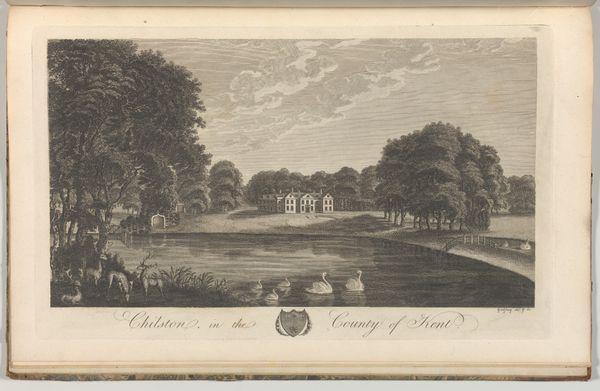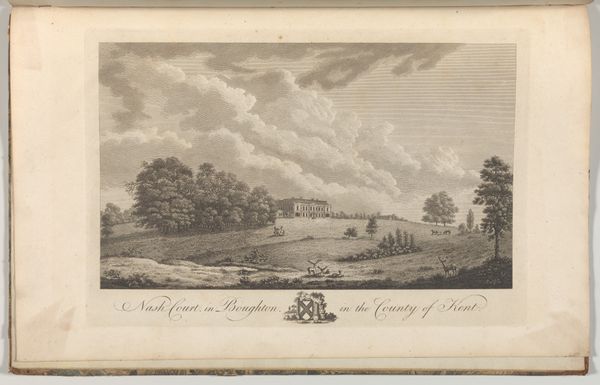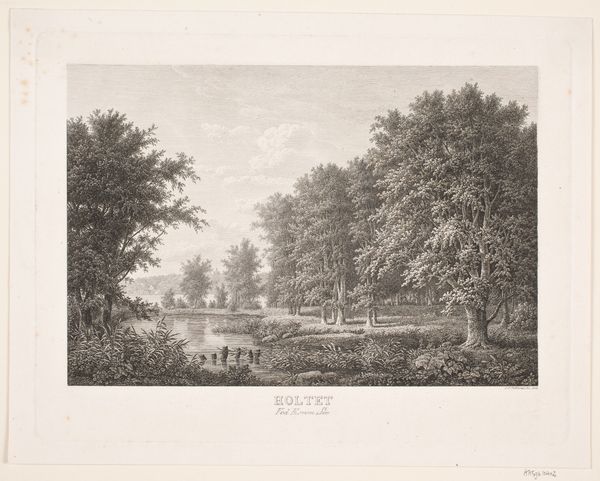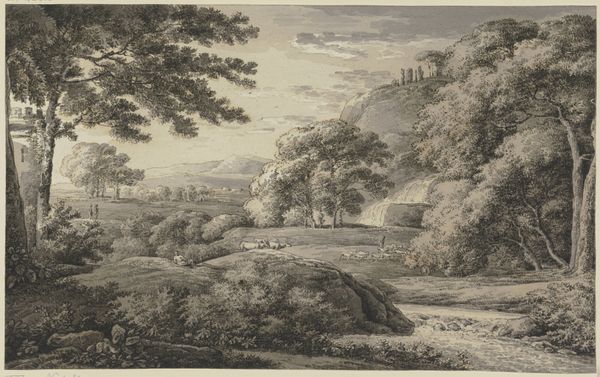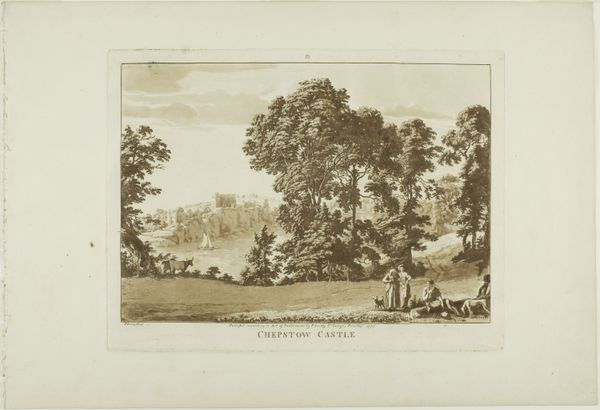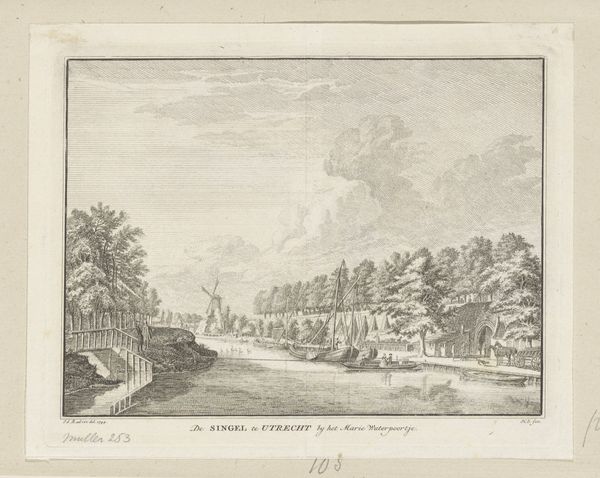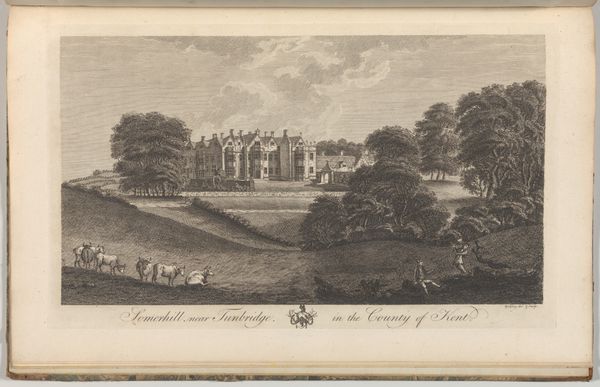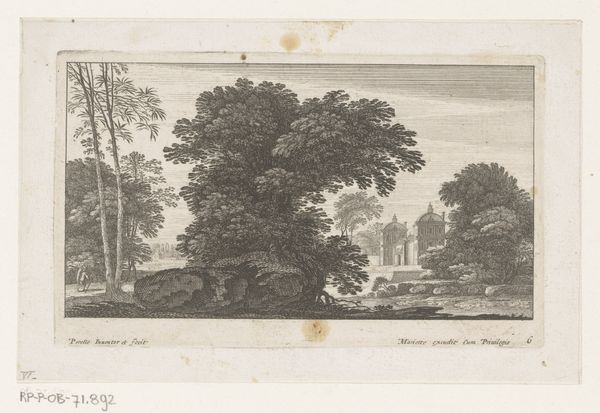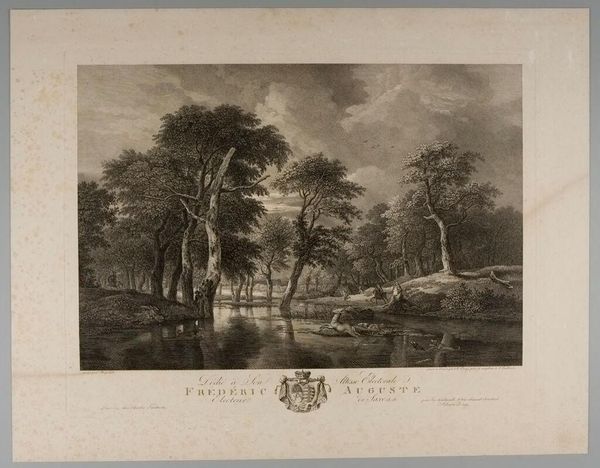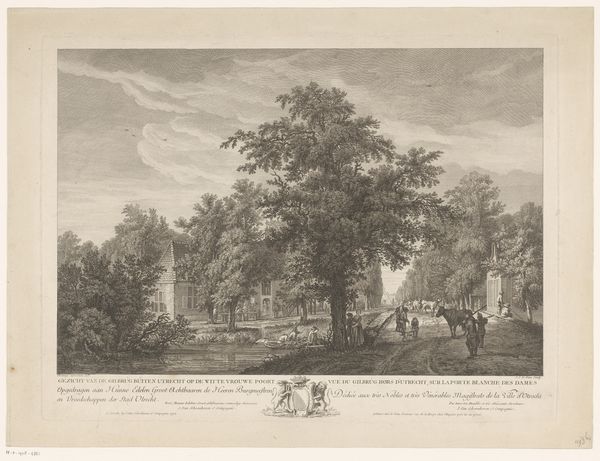
aquatint, drawing, print
#
aquatint
#
drawing
# print
#
landscape
#
romanticism
Dimensions: 272 mm (height) x 371 mm (width) (plademaal)
Editor: So, here we have "Snogeholm i Skåne," created around 1817. It’s a print – an aquatint, to be exact – depicting a landscape. The somber tonality gives it quite a melancholy feel. What societal forces were at play here that may have affected this art? Curator: That melancholy feel is quite characteristic of Romanticism. This work reflects a broader trend where artists were turning away from the Enlightenment's emphasis on reason. Tell me, how do you see this melancholic tone interacting with the depicted location? Editor: It feels almost like a stage setting – peaceful yet subtly… expectant? Like something monumental might happen. I notice the way the aquatint blurs the edges makes the whole scene look dreamlike and less of a real specific place. Curator: Exactly! Remember that at this time, landscape art was tied to national identity. Images like these weren’t just about depicting a location; they shaped perceptions and encouraged certain feelings towards the land. Who was consuming this imagery, and what did they get out of it? Editor: If it’s a print, then it must have been more accessible. It looks like it depicts Sweden. Were people developing pride in the beauty of their country? Maybe reinforcing land ownership and patriotism? Curator: Precisely. Consider how imagery like this fed into a sense of cultural ownership and national pride, especially important after periods of conflict. These seemingly benign landscapes could serve as quiet but powerful statements about belonging and legacy. Editor: It's amazing how a landscape print can carry so much socio-political weight. I'll never look at one the same way again. Curator: And that is why context is crucial when trying to understanding artworks like this.
Comments
No comments
Be the first to comment and join the conversation on the ultimate creative platform.
